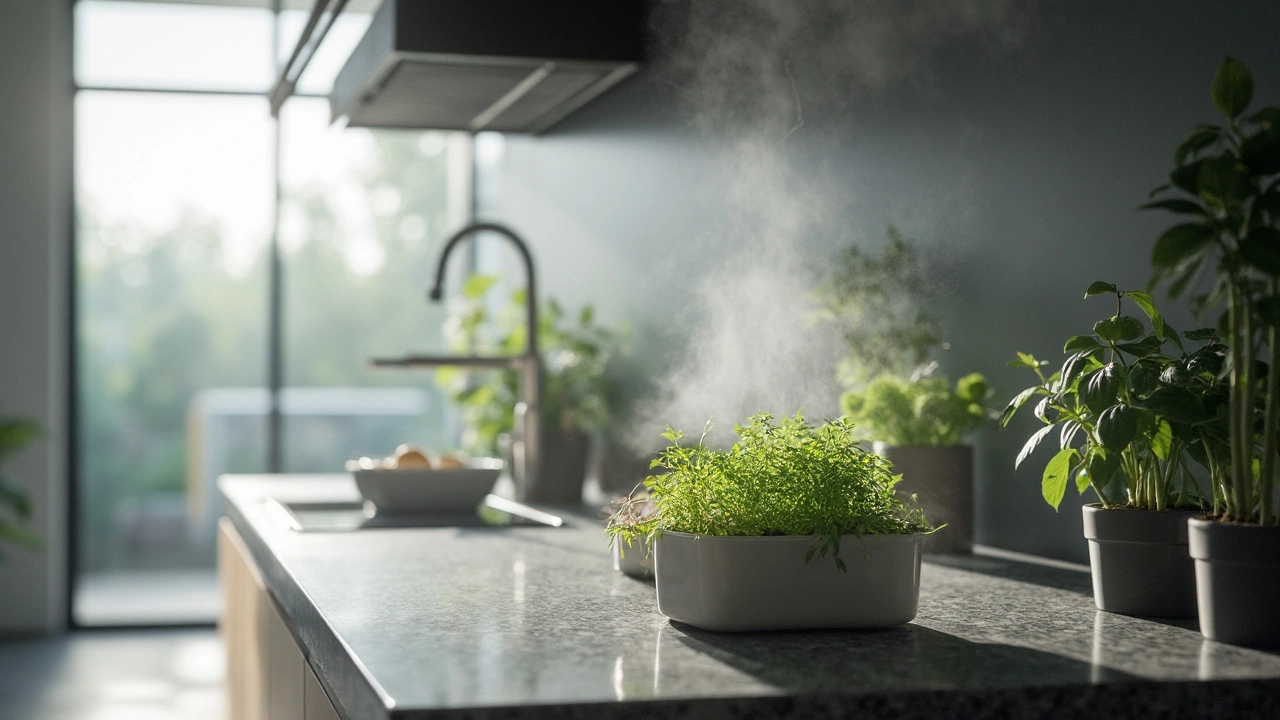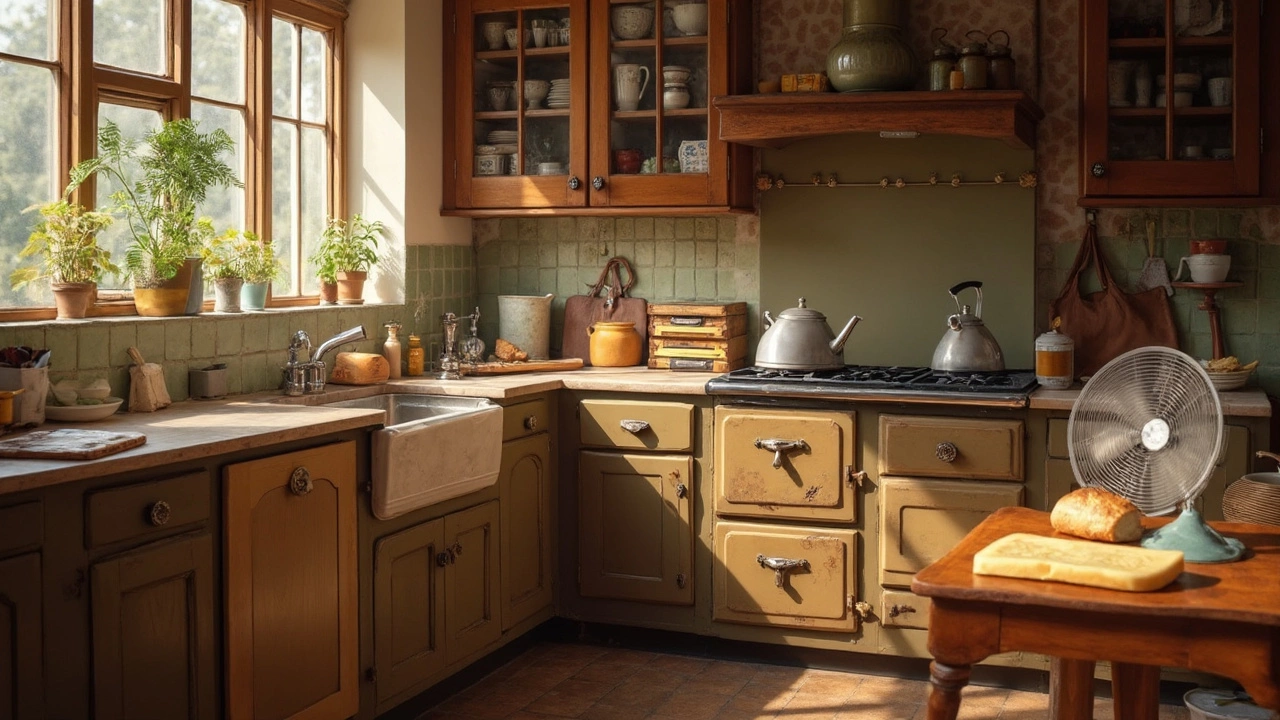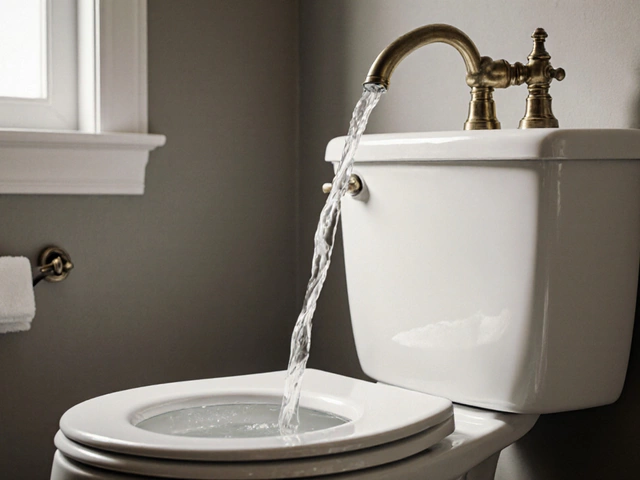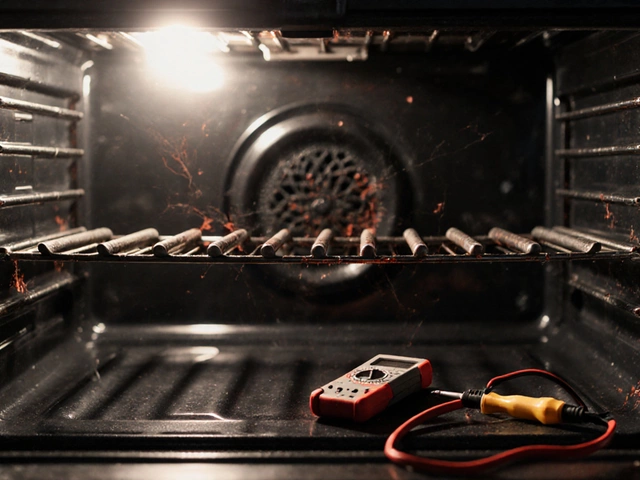When it comes to keeping your home fresh and clean, you might wonder if it's really necessary to have an extractor fan. These handy devices often find their way into kitchens and bathrooms, but what if you decide to skip this installation?
Extractor fans are more than just household decorations. They help improve air quality by venting out smoke, steam, and odors that accumulate during cooking or showering. Without them, you might face moisture buildup, leading to mold—a tricky problem best avoided.
But hey, it’s not the end of the world if you don’t have one. There are other ways to ensure good ventilation. Think about opening windows or using standalone air purifiers to handle the air movement. It's about finding what works for you.
Yet, it’s crucial to remember that without proper ventilation, air quality suffers. Cooking fumes can hang around longer, and humidity levels can spike. If you’re skipping the extractor fan, be ready to tackle these issues with alternative methods.
- Why Extractor Fans Matter
- Ventilation Alternatives
- Impact on Air Quality
- Moisture and Mold Concerns
- Addressing Smells and Fumes
- Practical Tips for Homeowners
Why Extractor Fans Matter
Extractor fans, especially those in kitchens and bathrooms, are more crucial than you might think. They're not just there to make noise or act as another appliance to clean. Their main job is to improve air quality, and they're quite good at it.
Mitigating Moisture
In the bathroom, after a long, hot shower, steam fills the room. This moisture can lead to condensation on walls and mirrors, eventually fostering mold growth. Bathrooms equipped with a ventilation fan handle this humidity by drawing the warm air out, keeping your walls and ceiling dry.
Fighting Odors and Fumes
In the kitchen, cooking can release a mix of steam, smoke, and sometimes even grease particles into the air. An extractor fan tackles these head-on, pulling them out before they settle on surfaces. Without one, it's easy for smells to linger and convert a pleasant home into a permanent 'food museum.' Plus, who wants their cooking session to lead to a smoke alarm going off?
Health and Safety Benefits
It's not just about comfort; it's about health too. Poor air quality isn't good for anyone, especially those with respiratory issues. Keeping the air moving helps dilute any pollutants, maintaining a healthier living environment.
Moreover, in some areas, having a functioning kitchen exhaust system is part of building codes for safety and health regulations. So, having one isn't just handy—it's sometimes necessary.
The bottom line? Extractor fans are the unsung heroes of our homes. They make our spaces not just livable but enjoyably so. If you're debating their importance, remember they do a lot more than just 'suck it up.' They're taking our indoor air quality to the next level.
Ventilation Alternatives
So, you’re thinking about life without an extractor fan. No worries—there are solid ways to keep the air in your home fresh and clean. Let's break down some easy alternatives that can help maintain a pleasant atmosphere.
Open Those Windows
When in doubt, just open a window. It’s the simplest and most cost-effective way to enhance ventilation. Even cracking it open for a few minutes can circulate the air and reduce stuffiness. Plus, during cooler times, it can help moderate indoor temperatures.
Standalone Air Purifiers
These gadgets do wonders. Standalone air purifiers can filter out dust, pollen, and even smoke particles from the air. While they don't vent air outside like an extractor fan, they effectively clean what’s indoors. They come in different sizes, so finding one that fits your space is easy.
Utilizing Ceiling and Portable Fans
Ceiling fans or portable fans can also help move air around your rooms. While they don’t directly expel odors or moisture outside, they promote air movement, which can help disperse unwanted smells and minimize humidity. Just remember to occasionally clean the fan blades—they can collect dust and impede the airflow.
Consider Passive Vents
Passive vents are small grilles placed strategically in walls or doors that assist with airflow. They’re not mechanical, so they don’t require electricity, but they do allow fresh air to naturally circulate through your home. Keep an eye out for wall dampers, which help manage airflow better.
Fixed Vents and Trickle Vents
Many modern windows come with trickle vents. These are small openings that allow a controlled amount of airflow. They’re unobtrusive and can be left open without worrying about security. Similarly, fixed vents in walls or roofs can provide continuous ventilation, offering a quiet solution to maintaining air quality.
While these methods might not replace an extractor fan completely, they help create a healthier living environment. Just combine a few of these ideas, and you’ll keep things fresh without stressing over fan installation.
Impact on Air Quality
Here's a thought: the air we breathe inside our homes can sometimes be more polluted than the air outside. It sounds surprising, but it's true. When you're whipping up a meal in the kitchen or enjoying a hot shower, you're releasing a mix of smoke, steam, and odors. Without a proper extractor fan, this stuff just lingers around.
Now, why's that a big deal? First off, ventilation is key to reducing indoor air pollutants. All those invisible particles like carbon monoxide and nitrogen dioxide get trapped inside. These can be especially concerning if you have a gas stove.
Dealing with Moisture
Without an extractor fan, moisture from cooking and even bathing can build up over time. High humidity levels lead to mold growth, which is not just gross but can seriously mess with your health. Ever noticed a funky smell in homes with poor ventilation? Yep, that’s mold starting to party.
Odors and Allergens
- Cooking smells aren't just a temporary inconvenience. They settle in fabrics, making your home a bit too "lived-in".
- Dust and allergens become more prominent as they're circulated through stale air.
If you're thinking all this sounds alarming, don't worry. There are ways to tackle it. Regular cleaning, investing in air purifiers, and yes, just cracking a window open can all help maintain better indoor air quality.

Moisture and Mold Concerns
Without an extractor fan, you're basically inviting moisture in, especially in spots like kitchens and bathrooms. Ever wonder why mold seems to love those places? It just needs a cozy, damp environment to thrive, and that's exactly what you get when steam from cooking or a hot shower doesn't have a way out.
Let's break it down a bit. Moisture hangs in the air after you use the shower or stove. If it doesn't have an easy escape route, like through a fan, it condenses on cool surfaces. You know, like your bathroom tiles or kitchen windows. Over time, this constant dampness becomes a hotbed for mold growth.
How Mold Affects Your Home
Mold isn't just an eyesore. It eats away at your walls and ceilings over time. Not to mention, it can worsen allergies or respiratory troubles for some folks. Definitely not something you want lingering around.
Keeping Moisture in Check
If you’re going fan-free, there are a few things you can do to keep things dry:
- Open windows after showering or cooking to let the built-up steam escape.
- Use a dehumidifier in key areas to suck out excess moisture.
- Wipe down wet surfaces promptly to prevent moisture from sticking around.
- Consider ventilators or air purifiers as an alternative for improving air circulation.
While these tips help, installing an extractor fan is often the simplest and most effective way to keep mold at bay. But if you're not sold on the idea, staying on top of moisture levels with these tricks is a solid Plan B.
Addressing Smells and Fumes
If you've ever cooked a spicy meal or dealt with a musty bathroom, you know how crucial it is to handle those pesky odors. The main job of an extractor fan is to whisk away these smells and fumes before they settle into your home.
Common Sources of Odors
Cooking aromas can be delightful but linger too long and they turn stale. Same goes for steam from showers or even smoke from candles. Without an extractor fan, these can stick around longer than you'd like.
DIY Solutions
No fan? No problem. Here are a few tricks:
- Open a window: Simply opening a window lets fresh air in and stale air out. It’s easy and free!
- Use kitchen vents: Many homes have ceiling vents that can help manage air flow. Just remember to clean them regularly.
- Light scented candles or use diffusers: Not only do they smell nice, but they can also help mask any unpleasant odors in the short term.
Get Help from Plants
Your houseplants aren’t just for decoration. Certain types, like peace lilies and English ivy, can help purify the air naturally.
A Quick Dive into Data
Believe it or not, the Environmental Protection Agency (EPA) says indoor air can be more polluted than outdoor air. This makes addressing smells and fumes even more important for a healthy living environment.
So while kitchen exhaust might seem just like an extra cost, what you're actually investing in is the comfort and health of your home. A few simple habits can make a difference, no matter what your setup is.
Practical Tips for Homeowners
If you’re thinking about ditching the extractor fan, or you're just looking for ways to keep your home fresh without one, you're in for some solid advice. Keeping the air quality decent and avoiding that stale smell involves a few tricks.
Ventilation Hacks
First, make sure you’ve got natural airflow going. Open windows whenever possible. Even a small crack can make a big difference. It’s especially useful during or after cooking, or a long hot shower.
Invest in Air Purifiers
If window-opening isn’t an option or doesn’t quite cut it, a reliable air purifier can be your best friend. They come in various sizes and can zap away a huge chunk of those pesky particles polluting your air.
Regular Maintenance
You might not have an extractor fan to keep clean, but don’t neglect general tidiness in your kitchen or bathroom. Grease and grime are sneaky. Wipe down surfaces to avoid build-up that can contribute to odor problems.
Use Dehumidifiers
Moisture can be a real nuisance, given it promotes mold. A dehumidifier helps to suck out the excess moisture, especially in bathrooms. They’re a worthy addition to your home toolkit.
- Monitor humidity levels, aiming to keep them below 60%.
- Choose a dehumidifier suitable for the room size.
Include Indoor Plants
Some plants naturally purify the air. Aloe vera, peace lily, and snake plant are known to assist in improving air quality. They’re a cool addition to your living space, adding both aesthetic appeal and practical benefits.
Bonus: Odor Control
Try using natural deodorizers. Baking soda or charcoal can often remove lingering smells in enclosed spaces. Place them strategically to absorb any unwanted scents.
Remember, while these tips help manage without an extractor fan, they’re not a complete fix. If you notice significant air quality issues, it might be time to rethink your ventilation strategies. After all, keeping your home fresh shouldn’t feel like rocket science—or in this case, fan science.





